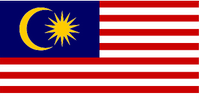01/05/2025 Market Watch

Dollar Firms Amid Thin May Day Trading; Yen Slides Post-BOJ
Key Takeaways:
- US dollar strengthens slightly; yen weakest following dovish BOJ.
- Euro and sterling see limited downside moves; Canadian dollar under pressure.
- Equity markets generally higher, led by strong US earnings.
- Treasury yields ease; gold and oil extend recent declines.
The US dollar started May on firmer ground amid thin trading volumes during May Day holidays across several global markets. Among the G10 currencies, the Japanese yen emerged as the weakest performer, driven lower by the Bank of Japan’s dovish policy stance. The BOJ held rates steady but revised growth forecasts downward, lowered inflation expectations, and indicated further delays in sustainably reaching its inflation target. Markets subsequently reduced expectations for additional rate hikes this year.
The euro briefly slipped below $1.1290 but managed a recovery to reclaim the $1.1330 level. Sterling continued its recent pullback, finding support near $1.3275. Meanwhile, the Canadian dollar reversed sharply from recent strength, as USD/CAD rebounded strongly above CAD1.3820 after touching multi-month lows yesterday.
Equity markets displayed resilience, with Asia Pacific bourses in Japan, Australia, and New Zealand advancing. Europe's Stoxx 600 Index benefited from gains in UK stocks, rising for its eighth consecutive session. Strong corporate earnings in the US, particularly from tech giants Microsoft and Meta, also buoyed US index futures, hinting at a positive opening.
Bond markets reflected a more cautious tone, with Japan’s 10-year JGB yield dropping approximately six basis points, marking its lowest level since early April at just under 1.25%. In the US, the 10-year Treasury yield softened slightly, settling below 4.15%, indicating a partial recovery from recent turmoil that saw yields spike to nearly 4.60% earlier in the month.
Commodity markets faced further pressure. Gold continued its pullback after recently peaking at $3500, currently trading around $3220 and notably dipping below its 20-day moving average for the first time in weeks. Oil extended its significant retreat, with June WTI futures falling another 2.3%, now trading below $57—a sharp reversal from last week's closing level above $63.
United States of America
Overview
The US dollar remains resilient despite weak macro data, including a disappointing ADP private sector employment print and the contraction in first-quarter GDP. The Dollar Index (DXY) posted its highest close in three days and briefly rose to nearly 100.10—its strongest level since mid-April—before retracing toward 99.70 in early European trading. While the broader trend appears constructive, sustained gains above 100.00, and more importantly 100.25, are needed to validate bullish technical momentum.
Much of today’s upcoming US data carries limited market impact unless results are significantly outside expectations. Weekly jobless claims data will be largely ignored in favour of tomorrow’s more consequential non-farm payrolls. March construction spending, coming after the already-known Q1 GDP data, holds little relevance. The April ISM Manufacturing Index may draw modest attention, but it has trailed the manufacturing PMI and reflects a broader cooling in the sector. Additionally, April auto sales may stay elevated due to front-loaded demand ahead of tariffs, though they are unlikely to match March’s 17.77 million annualised pace. The acceleration in vehicle sales suggests consumers are pulling forward future purchases, a phenomenon that could weigh on future demand.
Economic Drivers
- US dollar strength despite soft data suggests technical and positioning dynamics dominate.
- Market downplays ADP and GDP due to distortions from tariffs and inventories.
- Expectations remain focused on Friday’s NFP data.
- Anticipated moderation in April ISM manufacturing and auto sales supports a narrative of slowing momentum.
- Treasury yields and equity market sentiment are influencing broader dollar moves.
Data and Events
- May 1, 2025 – Initial Jobless Claims (Weekly)
- May 1, 2025 – Construction Spending (March)
- May 1, 2025 – ISM Manufacturing PMI (April)
- May 1, 2025 – Auto Sales (April, annualised pace)
Price Action
- DXY reached 100.10 before retreating to 99.70.
- Resistance seen at 100.00–100.25; support remains near 99.30.
- Technical bias constructive, but confirmation needed from a decisive breakout.
- Broader consolidation continues amid cautious sentiment.
Key Points:
- DXY hit a two-week high before easing back.
- ADP and GDP miss shrugged off by FX markets.
- ISM and auto sales may reinforce signs of economic softening.
- Traders await Friday's NFP for stronger directional cues.
Australia
Overview
The Australian dollar remains confined near the $0.6400 level, a zone it has hovered around since the previous week. After reaching a high of nearly $0.6450 on Tuesday—its strongest since December—the currency reversed lower, slipping close to $0.6380 today. Despite momentarily pushing above $0.6425, upside momentum remains capped. The 200-day moving average, now near $0.6460, continues to act as a key technical barrier that the Aussie has not breached in almost five months.
Australia’s March goods trade data revealed several important dynamics. First, despite the longstanding US-Australia Free Trade Agreement, the US maintained a bilateral trade surplus of approximately $18 billion in 2024—up 16% year-over-year—even while Australia was subjected to the US’s across-the-board 10% tariff. Second, Australia's trade dependency on China has grown significantly: year-to-date, trade with China exceeds the combined total of its next three largest partners (US, Japan, South Korea). Third, while Australia's trade surplus peaked years ago, the March surplus of A$6.9 billion far exceeded expectations and was the largest in a year, more than doubling both consensus estimates and the March 2024 figure.
The improvement was driven by a sharp 7.6% jump in exports for the month—following average monthly declines throughout 2024—which lifted the Q1 average to a 1.4% monthly gain. Meanwhile, imports fell 2.2% in March, bringing the Q1 average to a 0.3% monthly decline. This combination points to a more favorable net export contribution to Q1 GDP.
Economic Drivers
- Stronger March trade surplus driven by a sharp rebound in exports.
- Rising reliance on Chinese trade despite deep US trade ties.
- US tariffs remain in place despite FTA, highlighting geopolitical tensions.
- Net exports may contribute positively to Q1 GDP.
Data and Events
- May 1, 2025 – March Trade Balance (Actual: A$6.9 bln vs A$4.3 bln prior)
Price Action
- AUD/USD remains rangebound around $0.6400.
- Rejected near $0.6450; support seen near $0.6380.
- 200-day moving average near $0.6460 remains key resistance.
- Choppy trading reflects broader consolidation phase.
Key Points:
- Aussie capped below long-term resistance despite upbeat trade data.
- March surplus sharply beats expectations, driven by export rebound.
- Trade concentration with China grows; US maintains tariff pressure.
- Net exports likely to support upcoming GDP figures.
China
Overview
China’s financial markets are closed for an extended May Day holiday and will remain shut until next Tuesday, limiting near-term trading activity. The onshore yuan ended April near the bottom of its monthly range between CNY7.26 and CNY7.35. During mainland closures, offshore yuan (CNH) activity typically remains subdued, especially given the tendency of market participants to avoid large moves outside of the onshore trading band. The current CNH range of 7.2665–7.2870 reflects this caution, with broader US dollar sentiment driving modest fluctuations.
Despite some analysts calling for yuan devaluation in response to escalating US tariffs, Beijing has refrained from using the exchange rate as a policy tool. The People's Bank of China (PBOC) has instead allowed for marginally more flexibility in setting the daily USD/CNY reference rate while maintaining broad stability against the dollar. Strategically, this keeps the yuan steady versus the greenback, but implicitly allows it to depreciate against other currencies if the dollar weakens globally. This nuanced approach avoids the risks of overt devaluation while still providing a relative competitive buffer.
Economic Drivers
- Onshore markets closed through early next week limits price action.
- Yuan stability remains a policy objective despite tariff pressures.
- PBOC's controlled flexibility in reference rate maintains market discipline.
- No signal of competitive devaluation despite escalating trade frictions.
- Offshore market takes cues from dollar strength and USD/CNH band.
Data and Events
No major economic releases are scheduled today.
Price Action
- USD/CNH trading in narrow range: 7.2665–7.2870.
- Onshore yuan ended April near bottom of monthly range.
- Offshore market constrained by onshore policy bands (~7.0575–7.3455).
- PBOC’s stability approach keeps volatility contained.
Key Points:
- Mainland markets closed until Tuesday for May Day.
- Yuan remains broadly stable against USD despite tariff escalation.
- PBOC opts for subtle reference rate adjustments, not devaluation.
- Offshore yuan moves remain cautious in absence of mainland trading.
Europe
Overview
The euro briefly dropped below $1.1290 today, marking its lowest level since April 16, before finding support near the 20-day moving average at approximately $1.1280—a level it has not breached since early April. It subsequently rebounded toward $1.1335 in low-volume European holiday trading but failed to hold those gains. Technically, a close below $1.1300 would be more meaningful and could signal further downside.
Market focus now shifts to tomorrow’s release of the preliminary April CPI. A 0.5% month-over-month rise is anticipated, but due to favourable base effects, the year-over-year inflation rate is expected to ease slightly to 2.1% from 2.2%. In contrast, the core CPI may tick up to 2.5% from 2.4%. The stronger euro and falling energy prices give the European Central Bank room to revise down its 2025 inflation forecast—currently at 2.3%—when it meets next month. Markets are already pricing in at least 2.5 rate cuts (quarter-point increments) by year-end, reflecting a dovish monetary policy outlook.
Economic Drivers
- April CPI expected to show headline deceleration, but core may rise.
- Stronger euro and falling oil reduce inflationary pressures.
- ECB may lower 2025 inflation forecast next month.
- Swaps market pricing in 2–3 rate cuts before year-end.
Data and Events
- May 2, 2025 – Preliminary CPI (April, YoY est. 2.1%; Core CPI est. 2.5%)
Price Action
- EUR/USD fell below $1.1290, found support near $1.1280.
- Rebounded toward $1.1335 but lacked follow-through.
- Key level to watch: $1.1300 close for technical validation.
Key Points:
- Euro nears key support, potential bearish setup forming.
- CPI data may show mixed inflation signals.
- ECB inflation forecast likely to be revised down in June.
- Market leans dovish, pricing in 2.5 rate cuts for 2025.
Japan
Overview
The Japanese yen weakened notably as the Bank of Japan struck a less hawkish and more uncertain tone, lifting USD/JPY toward JPY144.75 today. The dollar had previously found solid support just below JPY142.00 earlier this week, recovering to JPY143.15 on Wednesday before extending gains.
As expected, the BOJ maintained its overnight target rate at 0.50% during its latest policy meeting, with the next review scheduled for June 17—where it is again likely to stand pat. However, the central bank revised its economic outlook downward across the board. Growth for the current fiscal year was cut sharply from 1.1% to 0.5%, and the core CPI forecast (excluding fresh food) was lowered to 2.2% from 2.4%. For the following fiscal year, core CPI is expected at 1.7% (previously 2.0%) and seen at 1.9% in the fiscal year after. The BOJ now sees its 2% inflation target being sustainably achieved only in the second half of its forecasting horizon, which extends through 2027.
The BOJ also emphasized lingering uncertainty stemming from US tariff policies and the associated risk of retaliatory measures, which continue to cloud Japan’s external outlook.
Economic Drivers
- BOJ maintains 0.50% rate; no hikes expected in near term.
- Growth and inflation forecasts revised lower across all periods.
- Inflation target pushed further out into 2027 forecast horizon.
- Yen weakness driven by dovish policy stance and external uncertainty.
- US tariffs and potential retaliation add to macroeconomic headwinds.
Data and Events
- BOJ's Next Meeting: June 17, 2025
Price Action
- USD/JPY surged from sub-142.00 to nearly JPY144.75.
- Bullish breakout could target JPY148 in coming sessions.
- Yen remains under pressure from widening policy divergence.
Key Points:
- BOJ dovish hold sends yen lower; growth and CPI forecasts cut.
- Sustainable inflation target now seen only after 2027.
- Yen underperforms on global stage amid BOJ caution.
- USD/JPY breakout eyes potential move toward JPY148.
United Kingdom
Overview
Sterling continued its modest retreat for a second consecutive session, largely unwinding Monday’s gains. After sliding to around $1.3275 in early Thursday trade, GBP/USD rebounded toward $1.3335 during the London session, marking new intraday highs. While today’s economic data had limited market impact, attention is focused on local elections, which are drawing more political interest than the day's weaker-than-expected mortgage approvals and consumer credit data.
On a slightly more positive note, the final reading of April’s manufacturing PMI was revised upward to 45.4 from the initial 44.0. Although still firmly in contraction territory, the upward revision marks the first improvement since January. For context, the index stood at 49.1 in April 2024 and 47.0 at the end of last year, indicating an overall weakening trend in UK manufacturing.
Markets remain firmly positioned for the Bank of England to begin cutting rates as early as next week. The swaps curve currently reflects three full quarter-point cuts already priced in for 2025, with nearly a 90% probability of a fourth.
Economic Drivers
- Sterling pullback driven more by positioning than macro deterioration.
- Local elections garnering more attention than soft lending data.
- Upward revision in April manufacturing PMI offers slight optimism.
- Market remains confident in BoE rate cut cycle beginning imminently.
- Political and monetary policy developments dominate near-term outlook.
Data and Events
- May 1, 2025 – Local Elections (UK-wide)
- May 1, 2025 – Mortgage Approvals & Consumer Credit (March, weaker-than-expected)
- May 1, 2025 – Final Manufacturing PMI (April, revised to 45.4 from 44.0)
- May 9, 2025 – Bank of England Rate Decision (Expected rate cut)
Price Action
- GBP/USD dropped to $1.3275 before rebounding to $1.3335.
- Downside limited; recent pullback mostly retraced Monday’s gain.
- Support seen near $1.3270; resistance at $1.3350.
- Market remains reactive to BoE easing expectations.
Key Points:
- Sterling dips modestly but finds support ahead of local elections.
- Revised PMI hints at slight recovery, but still contractionary.
- BoE expected to begin rate cuts next week.
- Swaps market pricing in 3–4 cuts in 2025.
© 2025 SKONE Enterprise (003319453-V). All rights reserved.
The content on this site is for informational purposes only and does not constitute financial advice.


